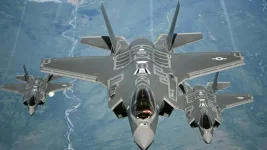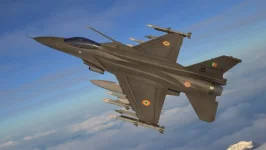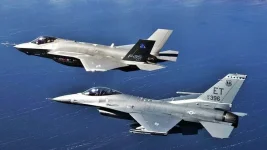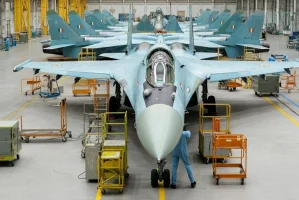- Views: 9K
- Replies: 84

Lockheed Martin has confirmed that it is prioritizing the F-21 fighter jet, a customized variant of the F-16, for India's Medium Multi-Role Combat Aircraft (MMRCA) competition, a deal estimated to be worth $18-20 billion.
This clarification comes amidst ongoing speculation about the potential sale of the F-35A Lightning II to India, especially after its prominent display at Aero India 2023.
Despite the F-35A's appearance at the air show, both Lockheed Martin and Indian Air Force officials have stated that there is no current plan to acquire the fifth-generation stealth fighter. A Lockheed Martin representative confirmed that no formal offer for the F-35A has been made to New Delhi.
This stance aligns with previous statements from Indian Air Force Chief Marshal Birender Singh Dhanoa in 2018, who categorically denied any interest in the F-35 at that time.
While the F-35A's presence at Aero India fueled rumors of a potential sale, it is now being viewed by experts as a demonstration of the strengthening U.S.-India defence relationship rather than a concrete offer.
Some analysts, like retired Air Marshal Manmohan Bahadur, believe that the F-35A's complex systems and potential integration challenges with India's existing infrastructure make it an unlikely choice for the near future.
Instead, Lockheed Martin is heavily promoting the F-21, which boasts significant enhancements tailored specifically for the Indian Air Force. These include an advanced glass cockpit, upgraded avionics, and the unique Triple Pylon Rail system, enabling the aircraft to carry multiple AIM-120 air-to-air missiles – a capability not typically found in similar fighter jets.
The F-21 is being offered as a "Make in India" solution, with Lockheed Martin emphasizing technology transfer and local production in partnership with Indian companies like Tata Advanced Systems. This approach aligns with India's push for domestic manufacturing and could potentially create thousands of jobs within the country.
However, the F-21 faces stiff competition from other global contenders vying for the MMRCA contract. These include:
- Russia's MiG-35 and Su-35: Although Russia has been a traditional defense supplier for India, the country's recent focus on diversifying its sources may impact their chances.
- Boeing's F-15EX: Boeing has received approval to formally offer its advanced F-15EX fighter jet to India.
- France's Dassault Rafale: Already in service with the Indian Air Force, the Rafale is a strong contender, with France eager to secure further orders.
- European Eurofighter Typhoon: Known for its agility and versatility, the Typhoon is backed by a consortium of European nations.
- Sweden's Saab Gripen E: Saab is offering the Gripen E, highlighting its cost-effectiveness and advanced technology, along with significant technology transfer proposals.
Furthermore, the development of India's own fifth-generation fighter, the Advanced Medium Combat Aircraft (AMCA), adds another layer of complexity to the decision-making process. The success of the AMCA program could potentially influence India's long-term reliance on foreign fighter jets like the F-35A.





